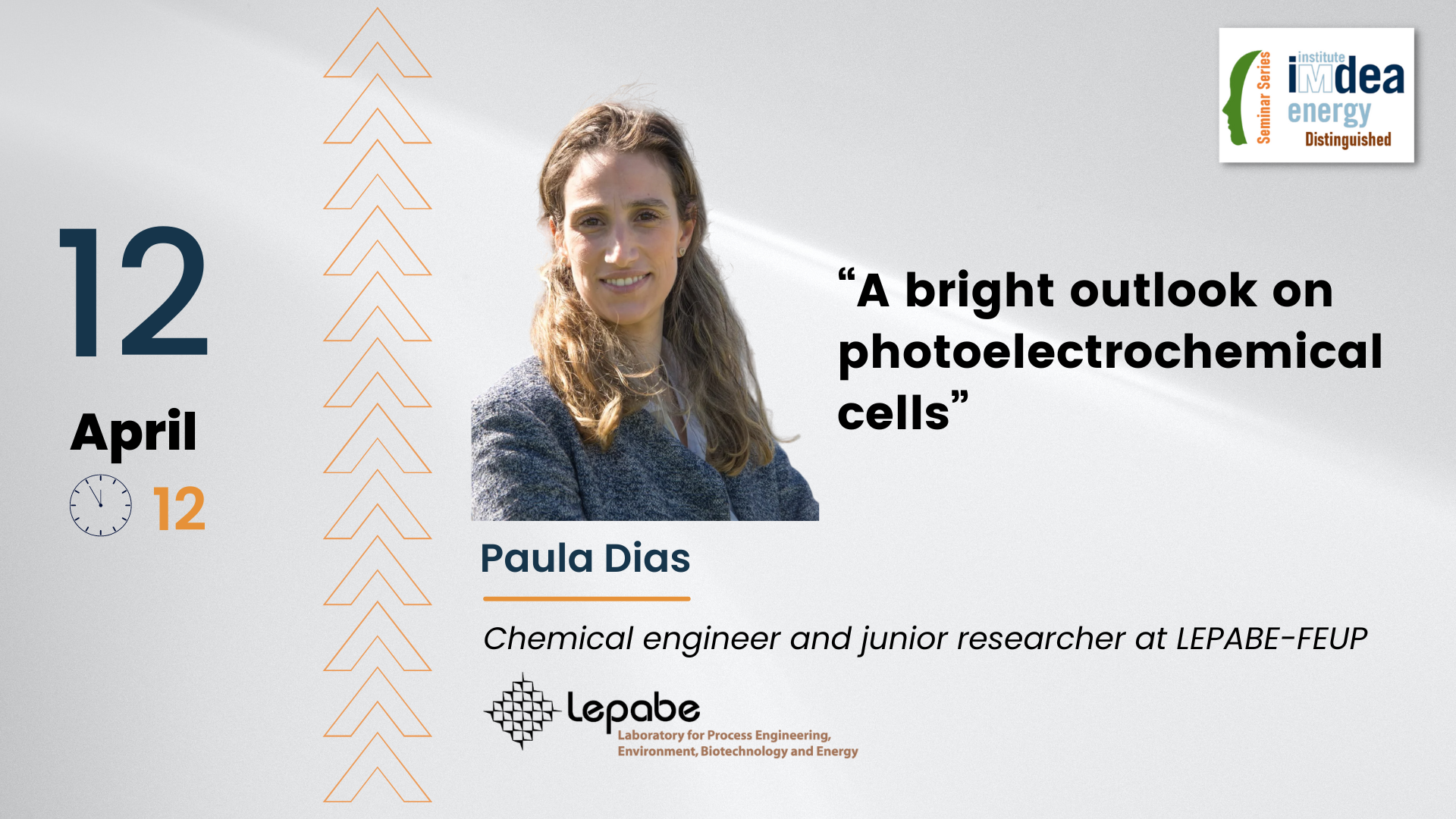Distinguished Seminar: «A bright outlook on photoelectrochemical cells»

Summary
The European Commission issued a set of directives requiring the swift decarbonisation of energy. Imagine a storing technology that mimics the energy strategy of the plants, i.e. harvests sunlight and stores it by driving thermodynamically uphill redox processes, providing a source of chemical energy in the form of electrochemical fuels. Photoelectrochemical (PEC) cells promise to be this technology, addressing the drawbacks of conventional photocatalysis (PC) and photovoltaics-linked electrolyzer systems. However, PEC cells remain at a low TRL due to challenges such as i) low semiconductor efficiency defined as the actual solar-to-H2 (STH) conversion efficiency, for direct water cleavage (>1.5 V), ii) system durability, and iii) lack of validated demonstrators.1
More recently, a new technology named solar redox flow cell (SRFC) revamped, which uses a semiconductor-liquid junction photoelectrochemical (PEC) cell for solar charging redox pairs dissolved in liquid electrolytes. The heat stored in electrolytes can be heat-exchanged for sanitary water applications and thermal comfort. Moreover, the stored chemical energy can be then: i) converted into electricity at a redox flow battery (RFB); ii) used for producing H2O splitting directly at an electrochemical cell; and iii) used to reduce CO2 to chemical fuels, e.g. CO, ethylene or ethanol.2 The singularity of a SRFC is not achievable by any other technology.
This talk will present the latest developments in the PEC field: i) stable and efficient earth-abundant photoabsorber and catalyst materials; ii) optimized cell architectures suitable for large-scale solar fuels production; and iii) standardized methods for benchmarking device performance and stability.
References:
- Vilanova, A., et al., The route for commercial photoelectrochemical water splitting: a review of large-area devices and key upscaling challenges. Chemical Society Reviews, 2024.
- da Silva Lopes, T., et al., A 25 cm2 Solar Redox Flow Cell: Facing the Engineering Challenges of Upscaling. Advanced Energy Materials, 2022. 12(5): p. 2102893.
Short bio
Paula Dias is a chemical engineer and junior researcher at LEPABE-FEUP. She received her PhD degree in chemical and biological engineering from the University of Porto in 2016 on the development of innovative materials for Photoelectrochemical (PEC) water splitting. Her research activities aim at (photo)electrochemistry, namely PEC devices for solar energy harvesting, conversion and storage, redox flow cells, and hydrogen production through methane splitting technology. P. Dias has been involved in several research projects and, presently, (co-)leads ASAPFuels, TanPT, and 112CO2. Currently, P. Dias is an invited Professor for the Renewable Energies I course at the FEUP, and co-founder of Pixel Voltaic and Halius.
El evento está terminado.
Fecha
- Abr 12 2024
- ¡Caducado!
Hora
- 12:00 - 13:30
Localización
- Auditorio IMDEA Energía


